Psychology of Design: 12 Ways to Make Your Home Look Luxurious
A beautiful home isn’t just about expensive furniture or high-end materials—it’s about how a space makes you feel. The psychology of design focuses on how layout, color, texture, and intentional choices can transform even the simplest home into a haven of luxury. Whether you’re working with a tight budget or aiming to elevate your space slowly over time, this guide will show you 12 powerful, psychology-backed ways to make your home look and feel luxurious.
Why the Psychology of Design Matters
Design affects mood, productivity, and overall well-being. A luxurious home isn’t about wealth, it’s about experience. Psychology-driven design influences how light hits the room, how textures feel against the skin, and how the mind perceives comfort and beauty. Luxury is a sensation, not a price tag.
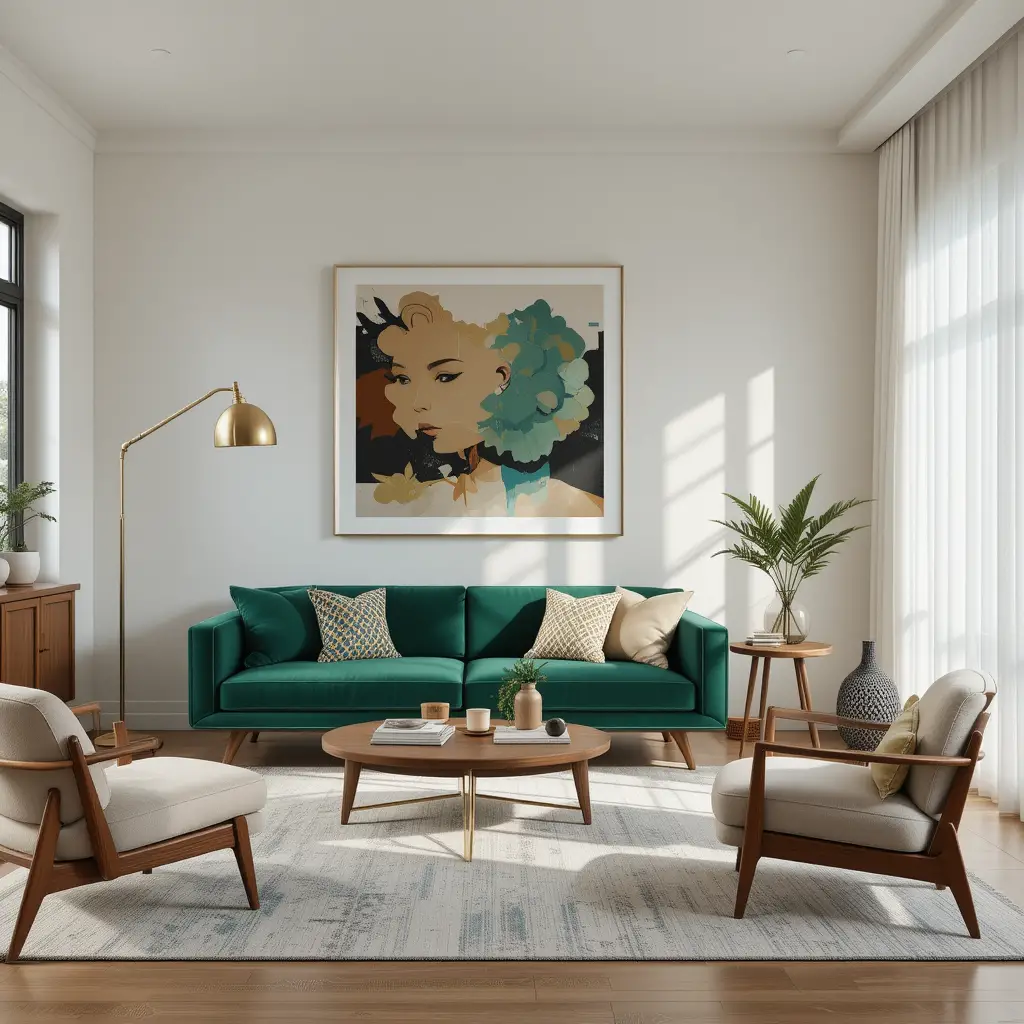
12 Ways to Make Your Home Look Luxurious (Backed by Design Psychology)
1. Master the Power of Symmetry
Psychological Insight: Humans are wired to find symmetry pleasing. It signals order and balance. Symmetry is comforting because it mimics the balance we see in nature and even in the human body.
Practical Tip: Pair items like lamps, chairs, or vases on either side of a focal point (like a sofa or bed). Symmetry instantly gives a space a polished and expensive feel. Even in smaller areas like console tables or nightstands, creating a mirror effect with identical objects or visual weight can elevate the design. Use symmetry to frame entrances, fireplaces, or artwork,it tells the eye everything is intentional, not random.
2. Use a Neutral Base with Layered Accents
Psychological Insight: Neutral palettes evoke calm and sophistication, reducing visual chaos. They help the brain relax by limiting distractions and creating harmony.
Practical Tip: Choose warm whites, taupes, and greys for walls and main furniture, then layer with textures (velvet cushions, linen throws, or jute rugs). Luxurious spaces feel intentional. Add seasonal or trend-forward colors in smaller doses,like vases, artwork, or throws, to keep the look fresh without losing the serene foundation. This creates depth without overwhelming the senses.
3. Add Architectural Interest
Psychological Insight: Our brains associate depth and detail with high value. Well-defined features make a space feel established, bespoke, and full of character.
Practical Tip: Use moulding, paneling, or decorative trim. You can install faux ceiling beams, board and batten, or simple picture-frame molding to add character. Even stick-on wall trim or peel-and-stick ceiling medallions can give the illusion of architectural heritage. Think beyond walls, arched doorways, built-in shelves, or decorative cornices also provide visual richness that feels expensive and custom.
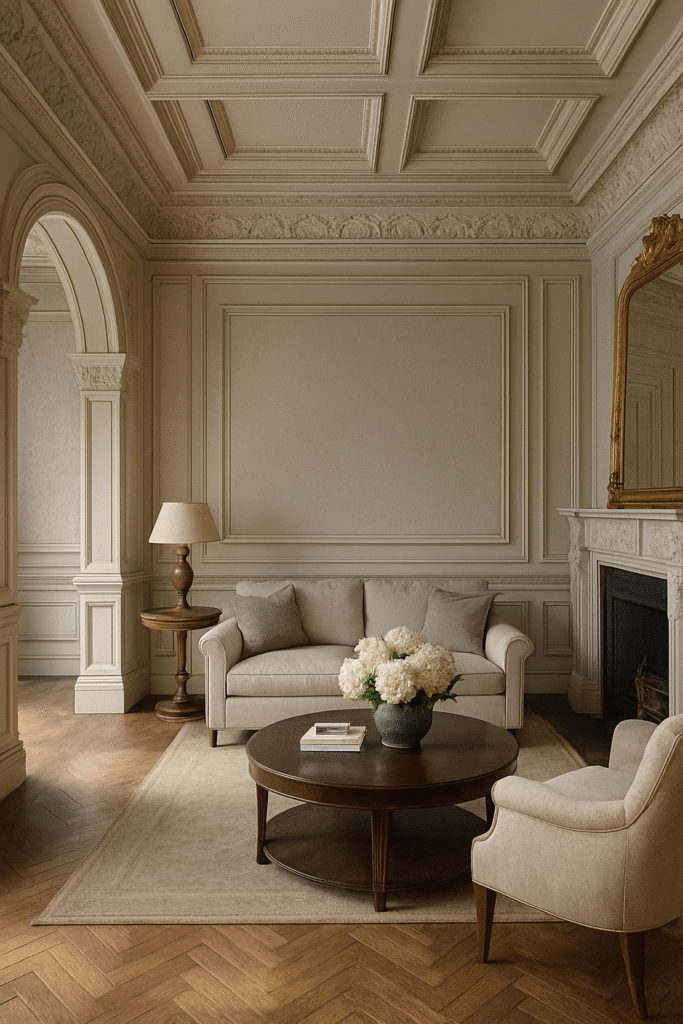
4. Invest in Statement Lighting
Psychological Insight: Lighting impacts our perception of space, mood, and value. It influences how we interpret color, ambiance, and scale.
Practical Tip: Swap out builder-grade fixtures for chandeliers, sconces, or sculptural lamps. Dimmable lighting adds a soft glow and enhances ambiance. Consider layers,ambient lighting for general use, task lighting for function, and accent lighting to highlight features. Choose materials like brass, smoked glass, or alabaster for a touch of opulence. Oversized or art-inspired light fixtures can double as décor, commanding attention like sculpture.
5. Keep It Clutter-Free
Psychological Insight: Clutter triggers stress and can make even high-end items feel cheap. A disorganized space makes it hard for the brain to relax or feel inspired.
Practical Tip: Invest in concealed storage (ottomans, baskets, or closed cabinetry). Apply the “one in, one out” rule to decor and aim for clean surfaces. Hidden storage makes space feel more open and functional. Embrace the philosophy of visual silence, empty space is not wasted; it’s what allows luxury pieces to stand out. Edit ruthlessly and prioritize meaningful or heirloom items.
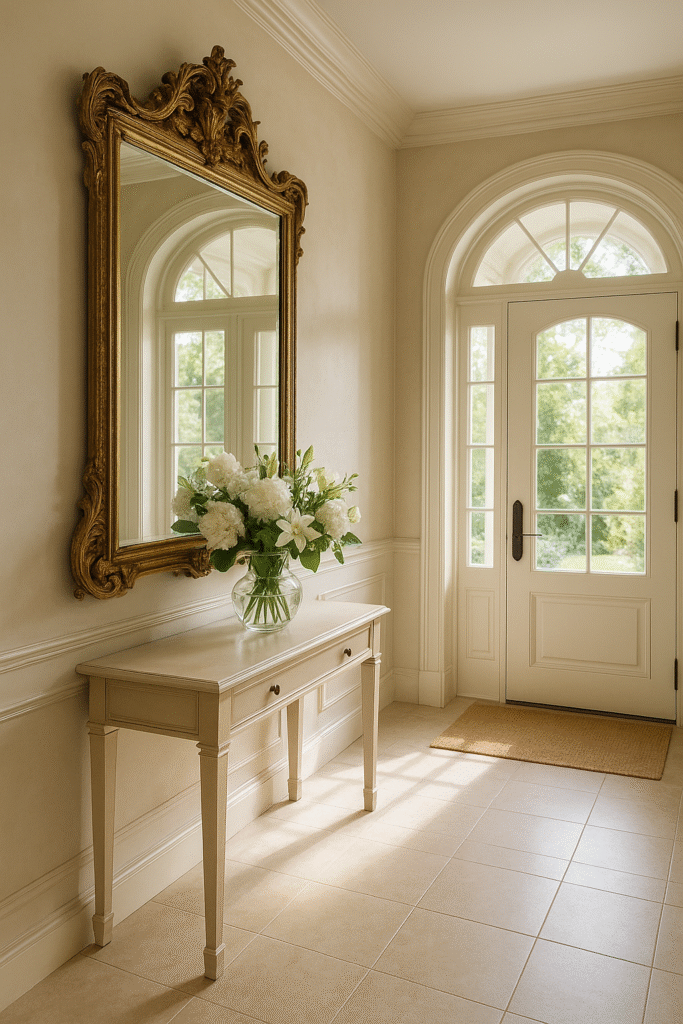
6. Use Mirrors Strategically
Psychological Insight: Mirrors trick the brain into perceiving more space and light. They reflect what we already find attractive in a room, enhancing it.
Practical Tip: Hang mirrors across from windows to reflect light or use oversized mirrors in small rooms to visually expand the area. Mirrors with unique frames (brass, antique, or sculptural) also act as wall art. Try placing them in narrow entryways, above mantels, or behind table lamps to maximize their light-bouncing benefits. Mirrored furniture can also add sparkle without overwhelming a neutral palette.
7. Add Layers of Texture
Psychological Insight: Texture engages the senses, adding emotional depth to design. It evokes warmth, comfort, and curiosity.
Practical Tip: Mix materials like boucle, velvet, wood, marble, brass, and ceramic. A velvet chair beside a rustic wood table creates a luxe contrast. Play with soft versus hard, shiny versus matte, smooth versus rough. A well-layered room feels alive and dynamic, even when the color palette is minimal. Textured walls (like limewash or Venetian plaster) add richness that paint alone can’t provide.
8. Choose Quality Over Quantity
Psychological Insight: Sparse, high-quality pieces elevate perception more than a crowded room. The brain interprets open space and fine materials as premium.
Practical Tip: Buy fewer but better items. A solid wood coffee table will outshine five trendy but flimsy decor pieces. Look for quality in construction, dovetail joints, solid metals, hand-finished ceramics. Consider second-hand or vintage sources to find timeless craftsmanship at a better price. Quality ages well; quantity clutters.
9. Use Oversized Art
Psychological Insight: Large-scale art draws focus, suggests confidence, and creates a gallery-like feel. It makes a strong visual statement that anchors the room.
Practical Tip: Choose one big piece per room or make a DIY canvas with bold strokes or a minimalist design. Don’t underestimate the power of negative space around it. Oversized art gives your space an editorial, curated look. Hang it at eye level and give it breathing room. Alternatively, create a cohesive gallery wall with matching frames or a monochrome theme to evoke the same luxury tone.
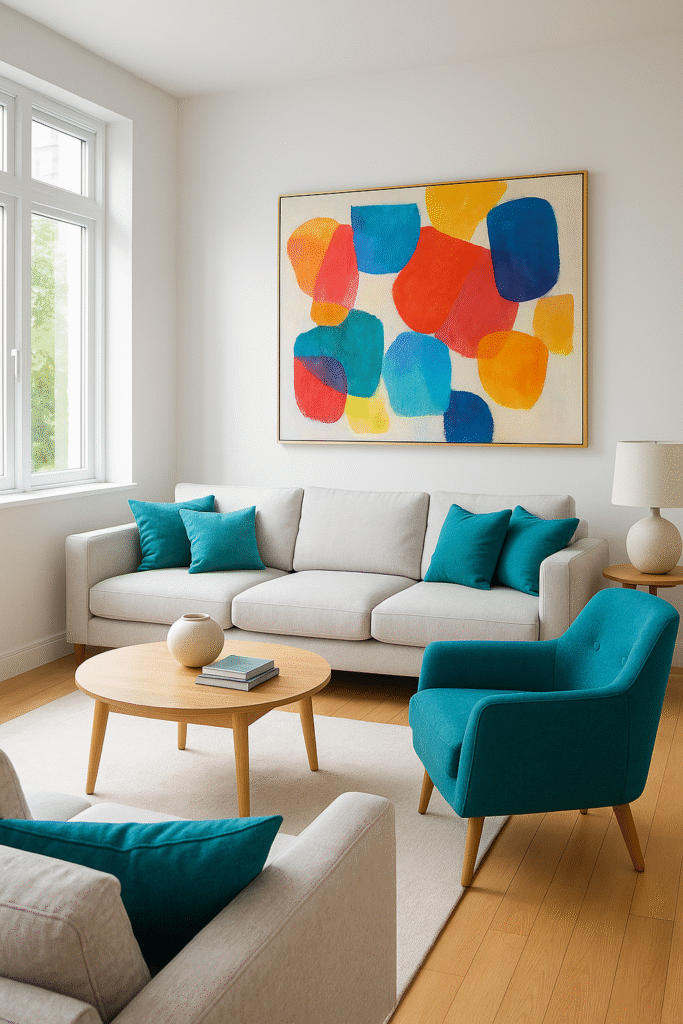
10. Keep a Cohesive Color Story
Psychological Insight: Cohesion reduces visual tension, making a space feel curated and luxurious. It helps the mind relax and perceive order.
Practical Tip: Stick to 2–3 dominant colors with complementary accents. Repeat colors throughout rooms for a seamless transition. Use the 60-30-10 rule: 60% dominant color, 30% secondary, 10% accent. Unify different rooms by repeating wood tones, metallic finishes, or fabrics. Even subtle connections, like a blue pillow that echoes a blue vase and create harmony that feels elevated.
11. Bring Nature Indoors
Psychological Insight: Natural elements calm the nervous system and bring a sense of richness. They ground us and enhance emotional well-being.
Practical Tip: Use real (or realistic faux) plants, wooden furniture, stone accents, or floral arrangements. Fresh greenery in a sleek vase brings instant luxury. Incorporate biophilic design by positioning natural elements near windows or water features. Use driftwood bowls, quartz decor, or clay pots for an earthy, organic elegance. Even a small indoor herb garden in the kitchen adds both aesthetic and practical value.
Related Post: 12 Fragrant Flowers That Will Make Your Home Smell Amazing.
12. Scent and Sound Matter Too
Psychological Insight: Luxury is multi-sensory. A beautiful room can feel cheap if it smells musty or sounds hollow. Our brains create lasting memories through smell and sound.
Practical Tip: Use diffusers with essential oils like sandalwood or lavender and play soft instrumental music or add fabric to absorb echo. Layering rugs, curtains, and upholstered furniture helps soften acoustics. Avoid overpowering scents; instead, aim for subtle, signature aromas. Create audio ambiance with water features, vinyl music, or curated playlists. A space that sounds and smells good feels luxurious, often before the design is even noticed.
Related Post: How to Create a Holy Atmosphere in Your Home:8 Practical Steps.
How to Start: Step-by-Step
- Declutter ruthlessly. Start by removing what doesn’t spark joy or serve a purpose.
- Pick a color palette. Choose 2–3 base colors and 1–2 accent shades.
- Elevate lighting. Swap basic bulbs or fixtures for ambient, layered lighting.
- Add symmetry. Rearrange furniture and accessories for balance.
- Upgrade one space at a time. Begin with high-impact areas like your entryway, living room, or bedroom.
- Incorporate texture and scent. Add plush throws, diffusers, and mixed materials for depth.
Dos and Don’ts of Designing a Luxurious Home
Do:
- Invest in good lighting and textures.
- Prioritize quality over quantity.
- Use mirrors and large-scale art for impact.
- Keep a consistent color story throughout.
- Mix high and low (e.g., thrifted finds with elegant pieces).
Don’t:
- Overcrowd your space.
- Follow every trend—timelessness is key.
- Neglect lighting or scent.
- Use too many loud colors at once.
- Forget function for the sake of style.
Key Takeaways
- Luxury is psychological. It’s how your home makes you feel, not just how it looks.
- Start with balance. Symmetry and intentional layouts are the foundation of elegant design.
- Texture, lighting, and scent are non-negotiable for a high-end feel.
- Design with the senses in mind. A luxurious space engages touch, sight, sound, and smell.
- You don’t need a fortune,you need intention, consistency, and a little creativity.
FAQs
Q: How can I make my home look luxurious on a budget?
A: Focus on decluttering, symmetry, good lighting, and textures. Invest slowly in timeless pieces and use DIY options like painting or moulding to add value.
Q: What colors make a home look expensive?
A: Neutral tones like cream, taupe, charcoal, and warm greys give a sophisticated look. Add depth with rich accents like navy, emerald, or matte black.
Q: Is minimalism essential for a luxury feel?
A: Not necessarily, but intentional minimalism (quality over clutter) often leads to a more luxurious atmosphere. Think curated, not cold.
Q: What is the first thing to change for a more elegant space?
A: Lighting. A well-lit room, especially with warm, layered lighting—feels more expensive instantly.
YOU MAY ALSO LIKE
- Teaching Self-Care to Your Children: Instilling Healthy Habits in the Next Generation
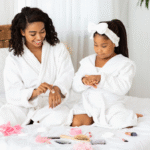
- Psychology of Design: 12 Ways to Make Your Home Look Luxurious
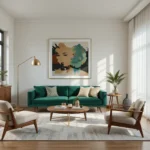
- 10 South African Spa & Wellness Escapes That Will Heal Your Soul

- Habits of a Stylish Woman: How to Be Effortlessly Chic and Create Your Signature Look

- How to Smell Good Every Single Day: Practical Tips for Lasting Freshness and Confidence.

Leave a Reply